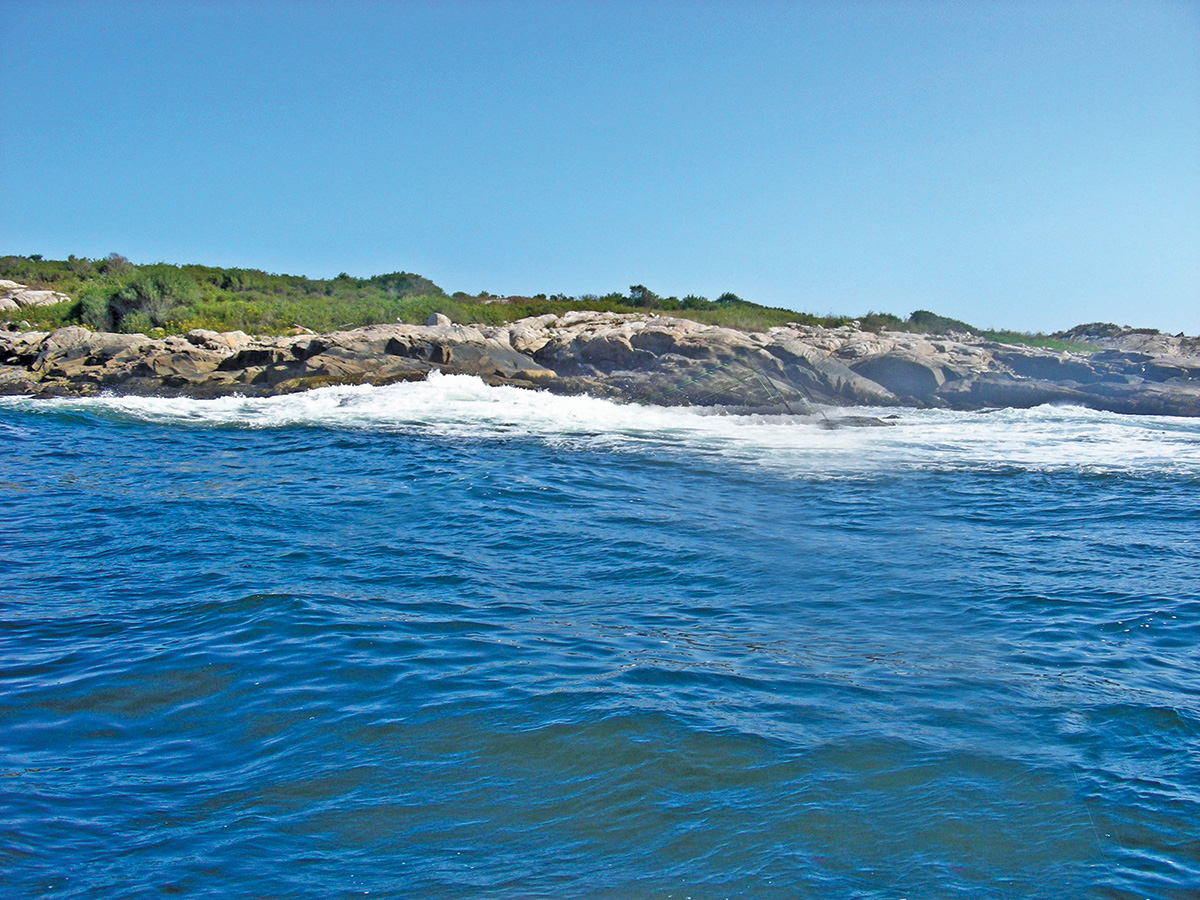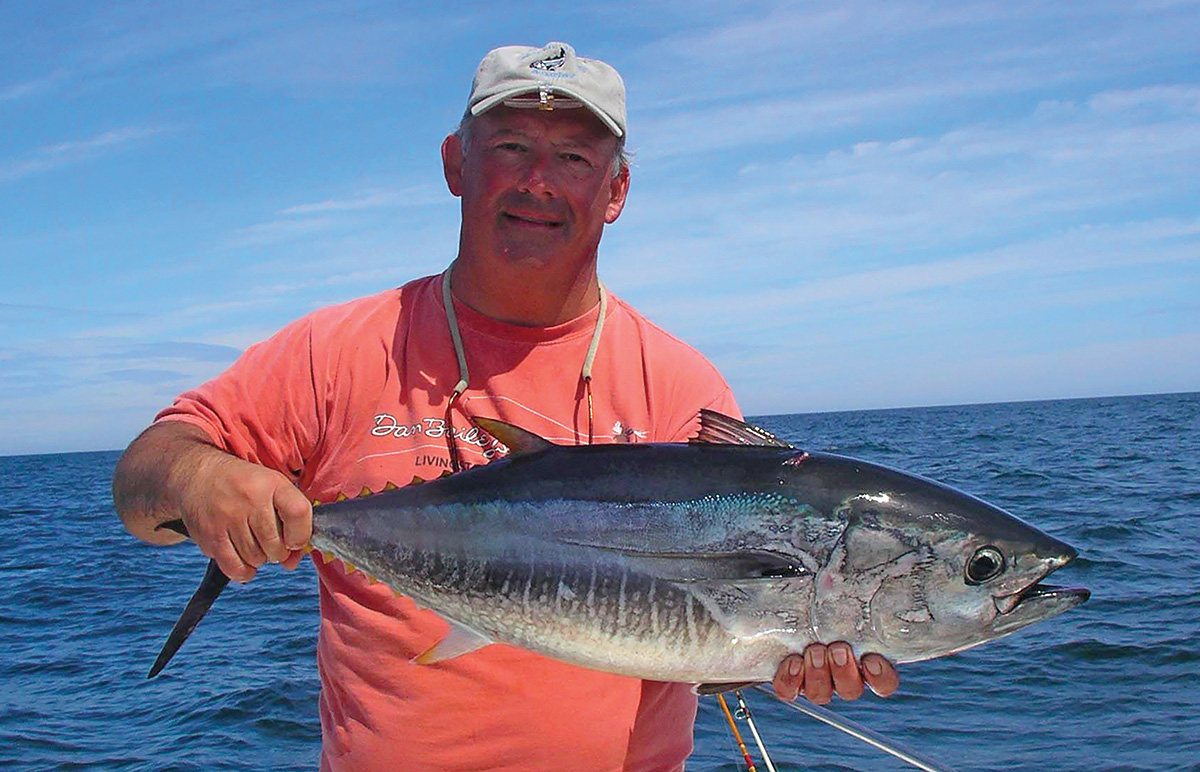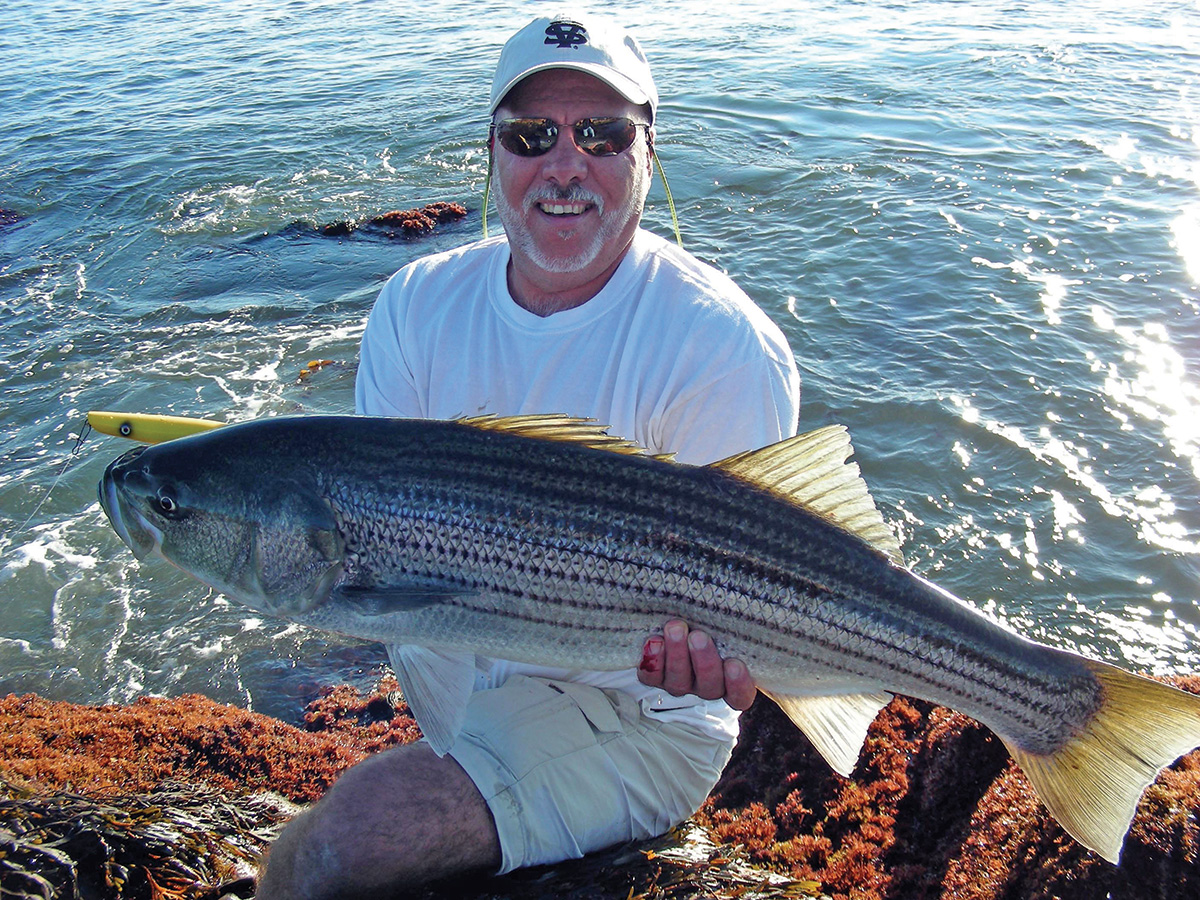
September marks the traditional beginning of the fall run at Cape Ann, Massachusetts as predators and baitfish respond to the biological and environmental clocks that rapidly signal changes. The many beaches and rock fronts that make up the “Other Cape” offer shore and boat anglers myriad structure characteristics that draw stripers, bluefish and the occasional school bluefin close to the shoreline for the bountiful baitfish that are schooling for their trip south.
Seasoned Cape Ann shore and boat anglers have come to understand how breaking waves create striper structure along the shoreline. This structure is affectionately known as “suds.” The suds are the result of crashing waves that produce highly-oxygenated sea foam along beaches and rock fronts. These suds produce cover for shoreline predators, especially so for stripers. Learning to read the suds where waves crash shoreward can tell you a great deal about the sub-surface topography and how stripers use it to ambush food items. The greater the width and breadth of the suds field usually means that the sub-surface structure is a shallow reef or rock field that extends well beyond the visible surface structure. Wind and tide characteristics will determine the wave heights and resulting suds field.
Casting Out
Shallow water (5- to 10-foot depths) suds structure should generally be fished with topwater baits such as pencil poppers, spooks and shallow-running swimbaits. Work the baits vigorously with a varied cadence and throw in an occasional pause to help stripers zero-in on the bait since suds will decrease visibility to some extent. If, on the other hand, the suds extend no further than 20 or so feet from shore, then it is likely that a quick drop-off to deeper water is present. In this scenario, work your bait a bit slower but with more movement to entice a waiting striper to strike. In this type of structure I prefer fishing a weighed soft plastic or a large baitfish-patterned fly on a fast-sink-tip fly line to get down quickly into the strike zone.
Actively-feeding beach stripers are typically found cruising just behind the first breaking wave, and it is not unusual to spot them right in the middle of the day pushing baitfish shoreward. This suds structure should be fished with baits or flies that work on the surface or just below. Work the bait slowly and allow the wave action to help move the bait into the strike zone. Any good topwater plug like darters, stickbaits, spooks and pencils can produce some savage strikes.
Similar rules apply for the fly angler when working stripers in the surf. I normally use a 9- or 10-weight rod with a reel spooled with a slow-sink, intermediate line. My fly choices are typically large-profile, flashy baitfish patterns that I can work in the wave or strip at a retrieval rate that will trigger aggressive strikes. A stripping basket will be of significant value when fly casting in the breaking surf to keep your line from being dragged away in the wave action. One last point to keep in mind when fishing the suds from the shoreline is that most of the active stripers will be holed up in the structure (close in) and not in the deeper water away from shore (unless they are actively feeding on bait) so focus in close. Also, a good pair of polarized sun glasses is a must in the bright sun for spotting cruisers.
When fishing from coastal rocks, there are two significant safety concerns: slippery rocks and large, breaking waves. It is a must to strap on a pair of spike-laden sandals, like Korkers, so that when scrambling to and from the water’s edge or chasing after a hooked striper, you do it without slipping on the ever-present dark green moss-like seaweed that covers most rocks below the high tide line. The last thing you want is a serious injury, loss of gear or being in the water where the huge waves will slam you back into the rocks. Shore fishing can sometimes limit your ability to get to favored reef areas because of difficult access, so you need to learn how to read the suds that you can get to safely.

Casting In
In contrast to fishing suds and surf along the shore, pursuing and targeting stripers along the coastline from a boat or kayak will require similar tactics and gear, but a variety of boat handling skills and knowledge of the area with regard to submerged hazards and wave action is necessary for safety. The Cape Ann prevailing south winds produce a moderate ocean swell that results in excellent suds as these waves come crashing ashore on the beaches and rocky coastline. However, these large waves present some risk since fishing the suds from a boat requires getting the boat in rather close and within casting range of reefs and rocks. It is paramount that a boat or kayak angler becomes familiar with the south/southeast facing shorelines before heading out. Anytime you fish tight to reefs or rocky shore structure you must remain vigilant with an eye seaward for those larger than average waves that can literally pick the boat up like a surf board and propel you shoreward or possibly cause a capsize. And for this reason, a boat angler should keep the engine running at idle so that an escape from a dangerous situation is possible.
Once an angler has carefully surveyed the rock front or reef and is confident that the area can be fished safely, set the boat up in position with wind and tide current favorable to drift closely to the structure. The choice of tackle is predominantly determined by water depth, wind strength/direction, wave heights, what baitfish might be present and the angler’s tackle confidence. If conditions are just right with light winds, small waves and water depth of less than 8 feet, I typically choose a fly rod or light spinning gear with a “match the hatch” lure or fly. Make the presentation shoreward and target the lure/fly at the merge of water and shoreline. If fishing a fly or un-weighted soft plastic, a good tactic is to allow the bait to settle in or slowly sink down for few seconds before moving it. Often a large striper will spot the offering, focus on it, and as soon as the bait twitches, they instinctively strike it. If difficult wind and tide conditions are present, then the best bet is trolling live bait or a tube and worm rig in tight to the structure.

Not Just Bass
In addition to the excellent shoreline striper catching, big blues and school bluefin tuna can also be had during the early fall run at Cape Ann. On more than one occasion I have encountered blues, stripers and school tuna pushing spike mackerel or peanut bunker right up to the sand or rocks. Catching the “Cape Ann Slam” on the same outing is a rewarding angling feat that I have only succeeded at one time (but look forward to doing again). Best bet boat locations for catching the Cape Ann Slam during September are Andrews Point, the east side of Thacher Island, Pebble and Cape Hedge Beaches in Rockport and the Essex and Ipswich River Inlets and rocky shoreline along Gloucester’s Back Shore. It is possible to hook up a school-sized bluefin tuna from shore, but it doesn’t usually end well for the angler!
The only real trick to finding bluefish anytime is finding the baitfish, and generally the sea birds will show you the way. Any of the typical catching methods will get you tight to blues once found. My favorite way to catch gator blues is with my fly rod casting topwater gurglers or popping bugs on a 10-weight rod and floating line and don’t forget a short braided wire leader!



